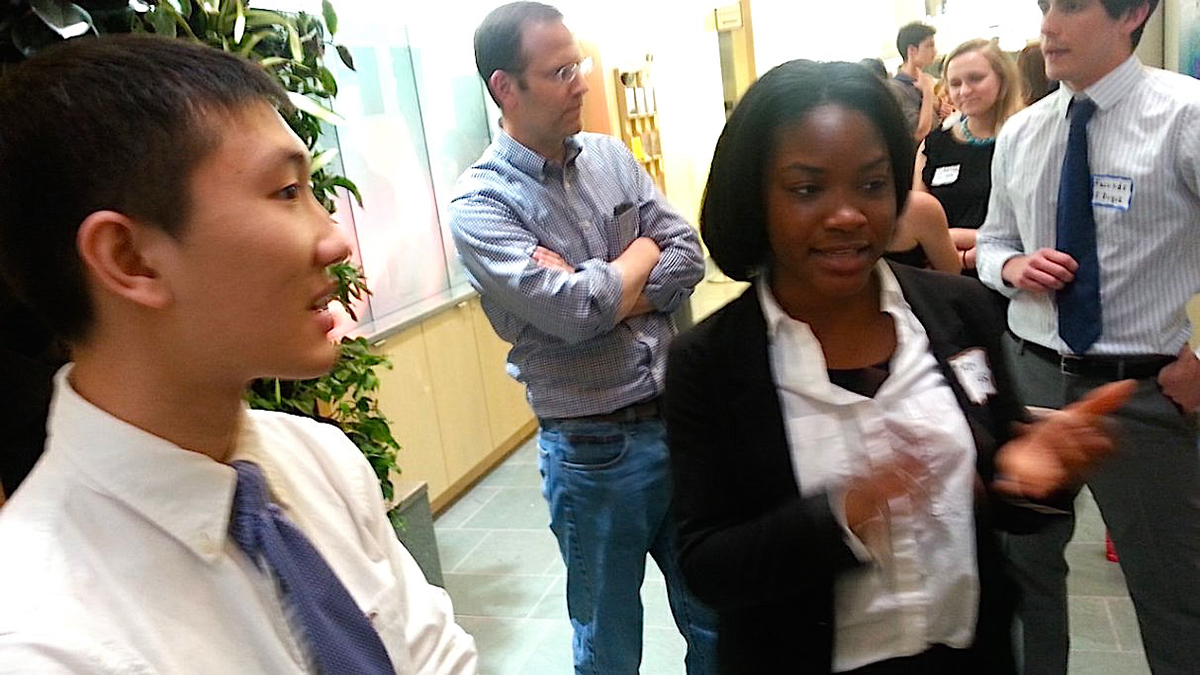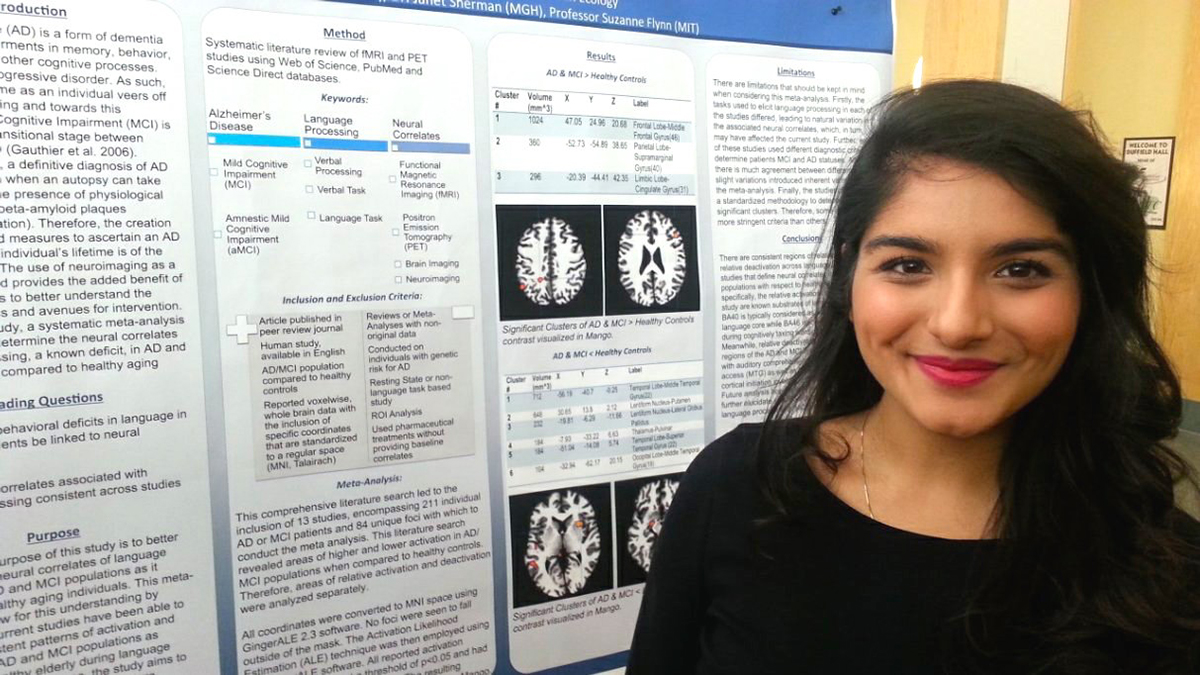Work of undergrad researchers spans many fields
By Blaine Friedlander

With a record-breaking number of students unveiling their research at the 31st annual Spring Research Forum, hosted by the Cornell Undergraduate Research Board (CURB), the world’s future looks full of solutions.
From improving green energy to finding potential pharmaceuticals to understanding how the environment affects health, the event celebrated a wide range of projects in engineering, and the physical and social sciences.
Janette Conde ’16 reassessed the estrogen activity of the plant fenugreek – found in the Middle East and around the Mediterranean – to understand its potential pharmacology. Conde, who plans to attend medical school, said it works as a natural hormone replacement and reduces cognitive decline.
Examining health links between the environment and the role of the placenta in protecting the human fetus from harmful substances, Paolo de Angelis ’16 observed high-risk populations – older women carrying multiples and teens carrying singletons – and found that prolonged environmental exposure may be a key factor in placental tissue content.
Emily Miller ’16 watched thousands of television public service announcements (PSAs) about the dangers of drunken driving to ascertain their efficacy. “PSAs should not be a catch-all for marketing,” said Miller, but they do keep adults mindful of the risks of drunken driving. Effective PSAs air during prime time and convey an optimal level of fear, she said.

For a greener Earth, Timnah Zimet ’18 aims to enhance wind energy by finding ways to use less land for turbines and by making the turbine clusters more efficient. Taylor McGuire ’16 examined the links between early puberty in girls and depression in women, finding that girls who reach puberty at a younger age ruminate more about their situation, which becomes a predictor for depression when girls become women.
Justin Horst ’17 sees the signs. For parents and kids, navigating theme parks is the key to fun. Horst – who aims for a career designing theme parks and who has an internship this summer in Los Angeles – has developed fun perspective signage. In a perspective sign, you can see the word “down” if you are looking at it from straight-ahead. But if you observe the sign from a different angle, “down” looks like a nifty piece of art – and gives you no direction at all.
Seeking to identify Alzeimer’s disease patients earlier, Azraa Janmohamed ’16 found areas of the brain with mild language and cognitive impairment that could serve as an early indicator for Alzheimer’s disease in brain scans. This research will help with methods analysis of neurological imaging data.
CURB’s Jacob Weiser ’17 and co-presidents Maria Sirenko ’16 and Jimmy Guo ’16 organized the event.
Media Contact
Get Cornell news delivered right to your inbox.
Subscribe